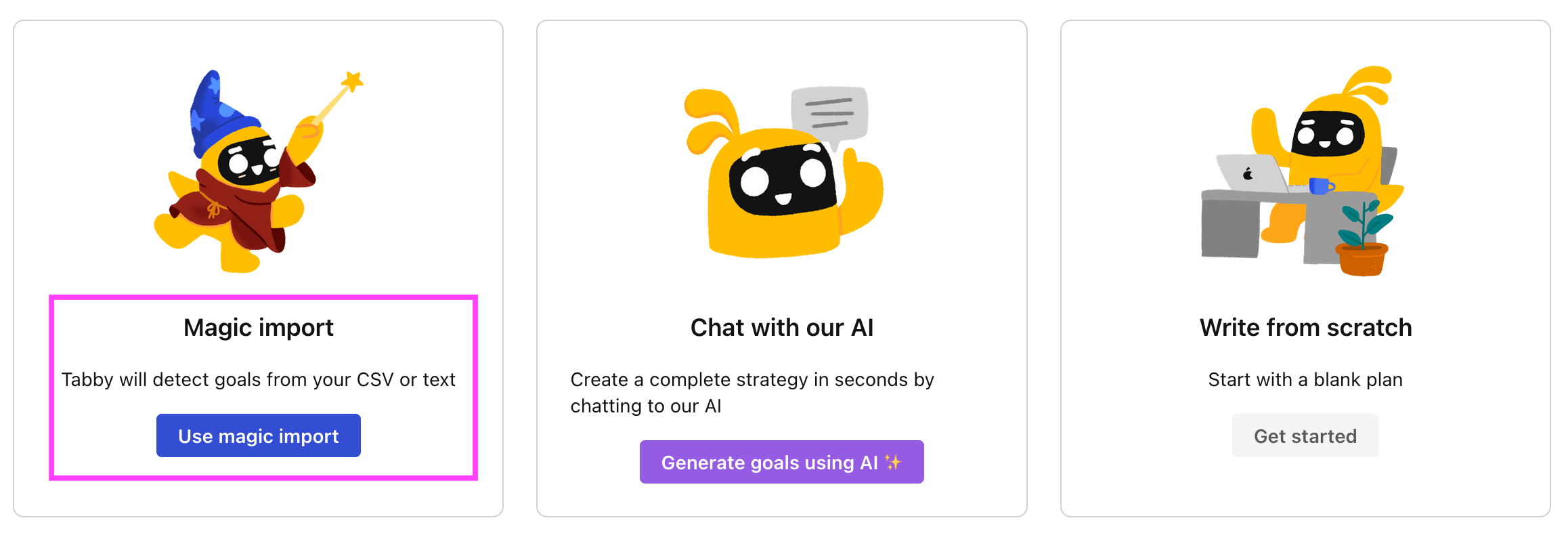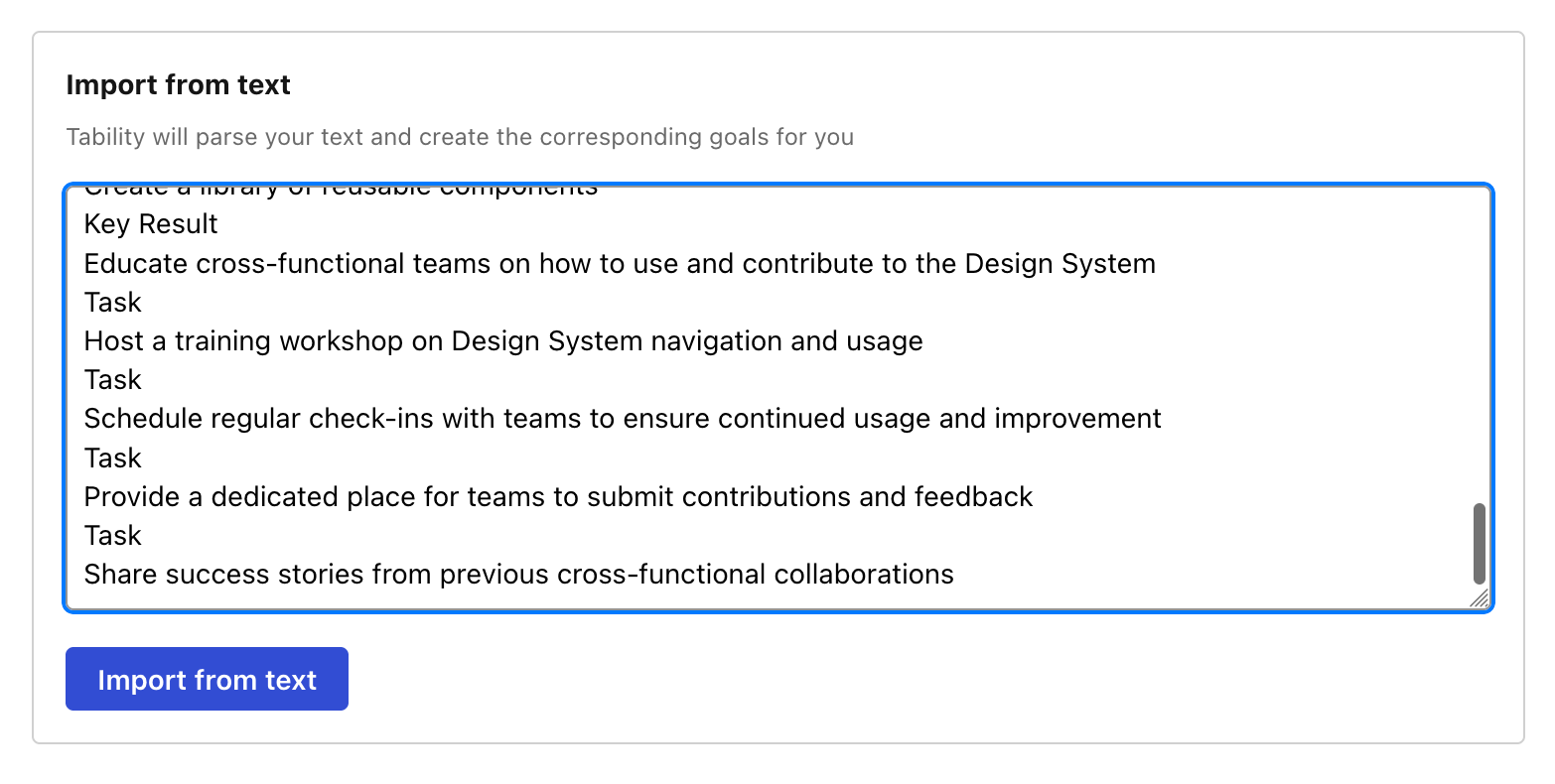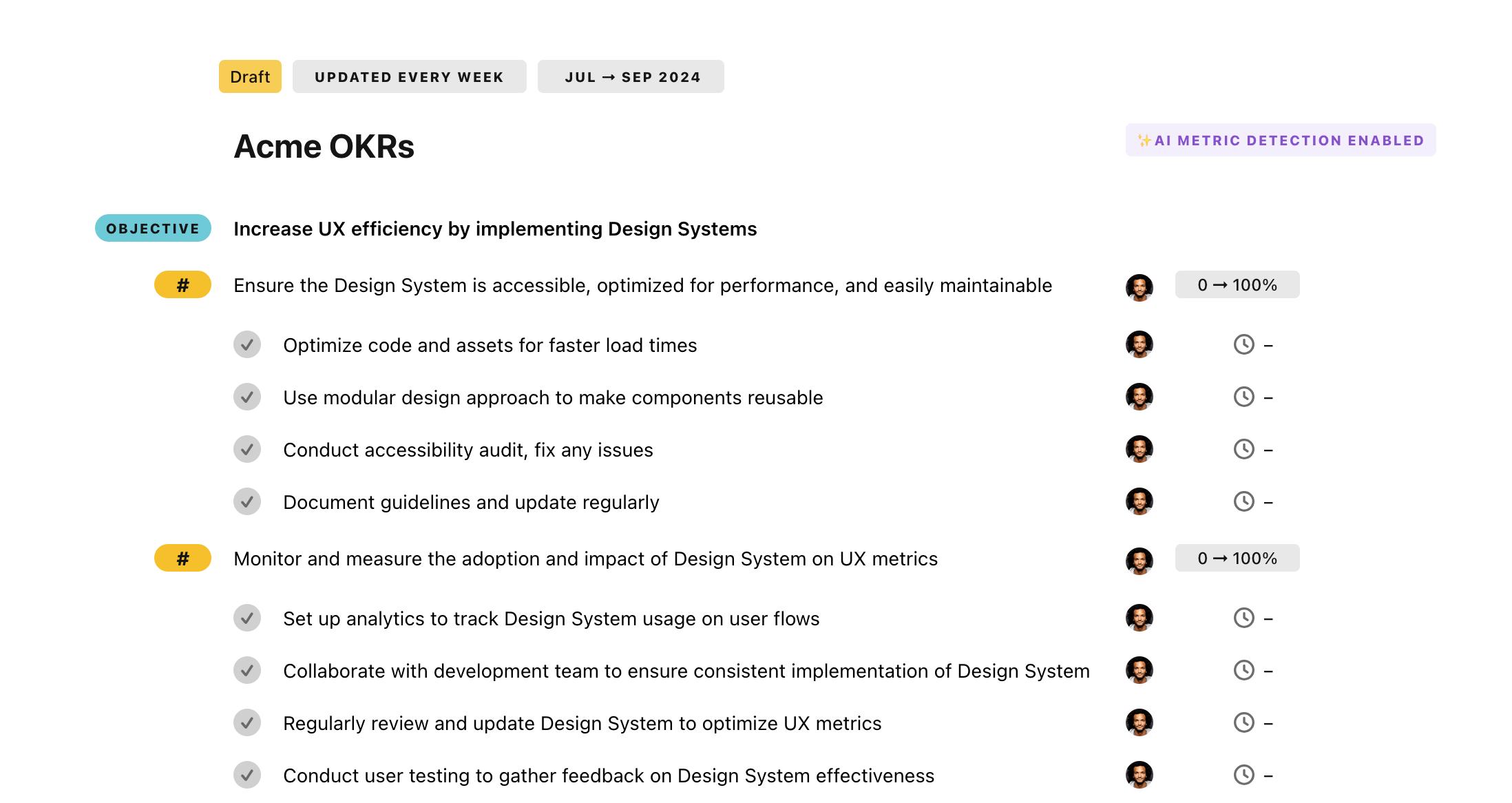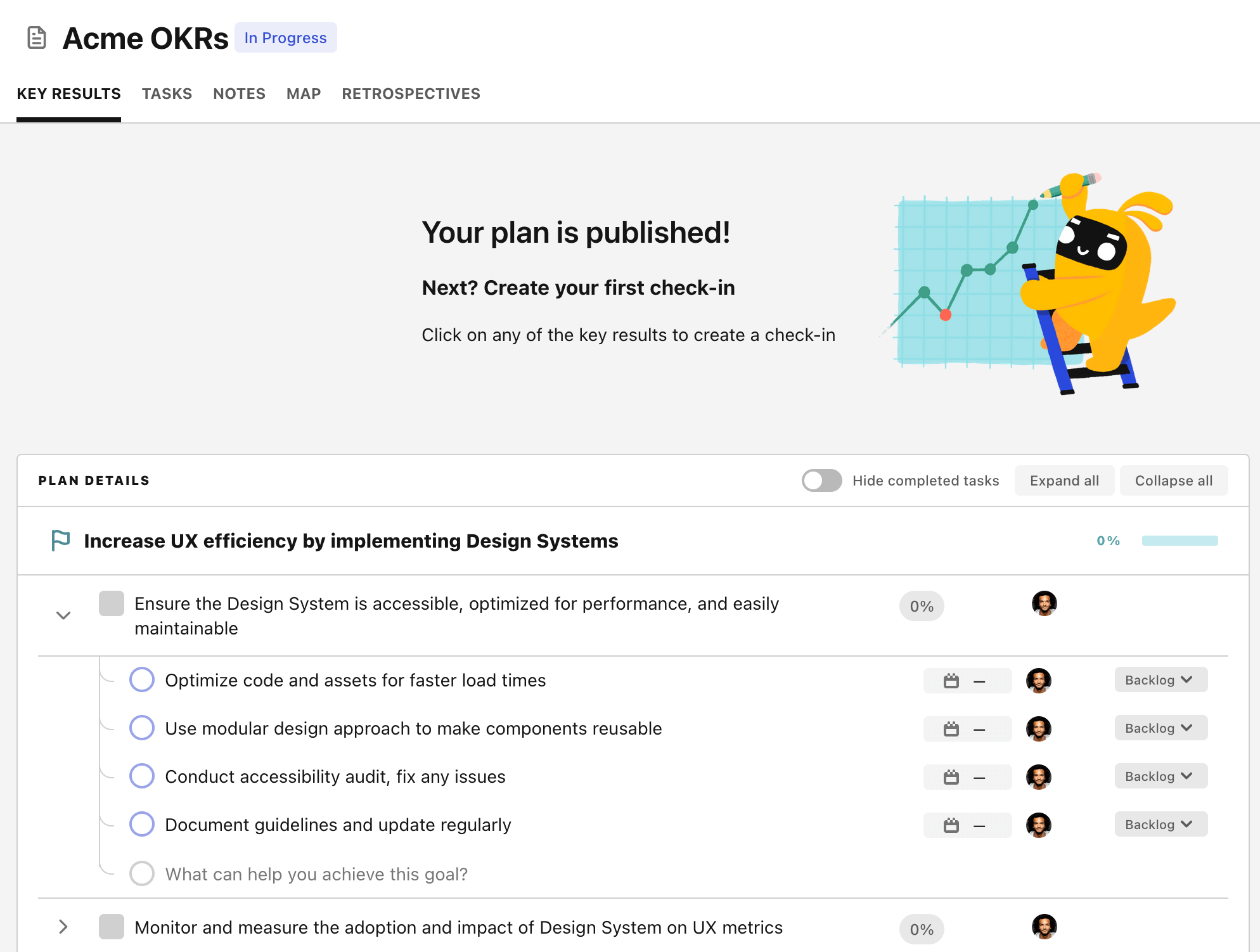OKR template to implement continuous monitoring and management of departmental budgets
Your OKR template
The second outcome under this objective involves training 80% of the management team on advanced budget management methods. The initiatives listed to attain this are identifying individuals who require these skills, executing training sessions to assess understanding, and scheduling these sessions with skilled trainers.
A third outcome focuses on establishing a monthly budget review process involving all departmental heads. Such a process would ensure transparency and inclusion in budget decisions. The initiatives set for this outcome include involving all department heads in meetings, scheduling routine budget review meetings, and regular budget adjustments based on feedback.
Ultimately, these methodologies focus on ensuring that the organization's budgets are closely monitored and managed, reducing inaccuracies, and promoting departmental collaboration on budgetary matters. Achieving budget accuracy and comprehensive management training are central to this OKR's objective.
ObjectiveImplement continuous monitoring and management of departmental budgets
KR Increase accuracy by reducing budget variances to less than 5%
Set clear and precise budget guidelines for all departments
Monitor and analyze spending consistently to identify variances
Implement regular budget reviews and adjustments as needed
KRTraining 80% of the management team on advanced budget management techniques
Identify individuals needing advanced budget management training
Execute training sessions and assess understanding
Schedule training sessions with a qualified trainer
KREstablish a monthly budget review process involving all department heads
Involve all department heads in meetings
Organize a routine budget review meeting
Implement regular budget adjustments based on feedback
How to edit and track OKRs with Tability
You'll probably want to edit the examples in this post, and Tability is the perfect tool for it.
Tability is an AI-powered platform that helps teams set better goals, monitor execution, and get help to achieve their objectives faster.
With Tability you can:
- Use AI to draft a complete set of OKRs in seconds
- Connect your OKRs and team goals to your project
- Automate reporting with integrations and built-in dashboard
Instead of having to copy the content of the OKR examples in a doc or spreadsheet, you can use Tability’s magic importer to start using any of the examples in this page.
The import process can be done in seconds, allowing you to edit OKRs directly in a platform that knows how to manage and track goals.
Step 1. Sign up for a free Tability account
Go tohttps://tability.app/signup and create your account (it's free!)
Step 2. Create a plan
Follow the steps after your onboarding to create your first plan, you should get to a page that looks like the picture below.

Step 3. Use the magic importer
Click on Use magic import to open up the Magic Import modal.
Now, go back to the OKR examples, and click on Copy on the example that you’d like to use.

Paste the content in the text import section. Don’t worry about the formatting, Tability’s AI will be able to parse it!

Now, just click on Import from text and let the magic happen.

Once your example is in the plan editor, you will be able to:
- Edit the objectives, key results, and tasks
- Click on the target 0 → 100% to set better target
- Use the tips and the AI to refine your goals
Step 4. Publish your plan
Once you’re done editing, you can publish your plan to switch to the goal-tracking mode.

From there you will have access to all the features that will help you and your team save hours with OKR reporting.
- 10+ built-in dashboards to visualise progress on your goals
- Weekly reminders, data connectors, and smart notifications
- 9 views to map OKRs to strategic projects
- Strategy map to align teams at scale